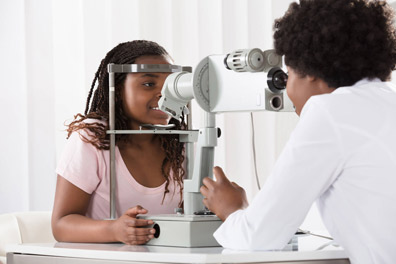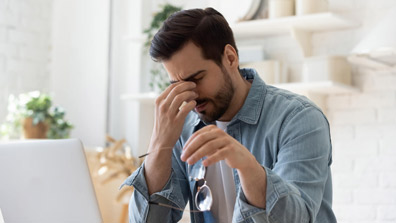Chalazion Treatment in Denver, CO
For most people, finding a lump on their eyelid can be a scary thing. At The Denver Ophthalmology Center, we understand your concern — a chalazion can seem quite serious. As we’re happy to inform patients at The DOC, however, chalazia are very routine and easy to resolve.
In many cases, a chalazion can simply be treated until it disappears, but if a case is better served by a minor surgery, you have nothing to worry about. Dr. Gregory Kouyoumdjian (known around the office and to our patients as Dr. K), our board certified, fellowship-trained eye surgeon, has completed hundreds of chalazion surgeries and can safely return your eyelids to normal.

What Is a Chalazion?
Before we go any further, let us assure you: a chalazion is not cause for emergency. Sometimes, patients see a lump in their skin, and their minds race to serious diagnoses like tumors, unusual infections, or contagious diseases. A chalazion is simply a fairly common type of cyst that happens to appear on your eyelid.
Inside your eyelids are mucous and oil glands, which produce special fluids that keep your eyes wet and your tears healthy. When one of these glands becomes blocked, it may cause swelling, and lead to a small and eventually painless lump called a chalazion.
What Causes a Chalazion?
A chalazion is the result of a clogged gland in the eyelid. There are no definite reasons why this happens, and some people may be more likely to develop a chalazion than others. We do know that people who exhibit certain risk factors are more likely to develop a chalazion. This includes people who have:
- Blepharitis, an inflammation of the eyelids
- Rosacea, a skin condition that causes redness and small bumps on skin
- Seborrhea, or dandruff, on the eyelids
- Conjunctivitis, also known as pink eye
- Meibum and oil being produced at a thicker consistency than normal
- Styes or a history with styes, which can develop into chalazia

Experience the difference.
What Are the Symptoms of a Chalazion?
A chalazion is a lump or swelling on one of your eyelids. This lump can be soft or firm depending on the case. It’s typically painless, although it can cause vision issues — such as temporary astigmatism and blurry sight — if it becomes large enough to put pressure on the eye. It’s important to note that a chalazion is not an infection, but it can get infected. In the uncommon event that this happens, it may become red, more severely swollen, and painful.
Chalazia are often mistaken for styes, which are acute inflammations of glands or eyelash follicles. While both can cause visible swelling, a stye can be fairly painful, whereas a chalazion usually isn’t.
How Is a Chalazion Treated at The DOC?
If our team at The Denver Ophthalmology Center diagnoses you with a chalazion after our thorough examination, we’ll discuss your specific case and go over our various treatment options.
With minor issues like chalazia, we’ll work on a sliding scale of treatment, starting with manual expression. We walk you through how to massage the affected area with hot compresses to help liquify material in the glands, boost circulation, and even prompt drainage.
If the chalazion doesn’t shrink in response to other treatments, we may recommend a minor surgery, which is nothing to worry about. During a chalazion removal, our expert eye surgeon Dr. K makes a tiny incision in the inner lid and carefully removes the obstruction. In the rare case that this procedure is needed, our team will walk you through exactly what to expect: from start to finish, we’ll work closely with you to provide effective relief.
To learn more about chalazion treatment and other eye care services we offer, call The Denver Ophthalmology Center at (303) 991-9662 or schedule an appointment.
The Denver Ophthalmology Center (The DOC)
8381 Southpark Ln
Littleton, CO 80120
Phone:
(303) 991-9662
Fax:
303-991-9647
